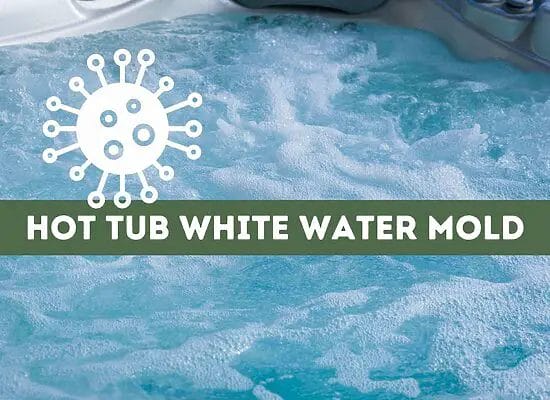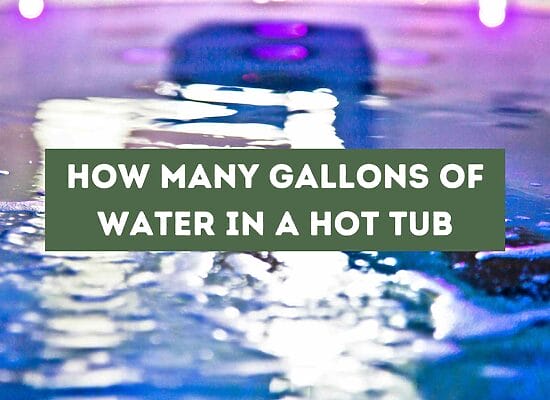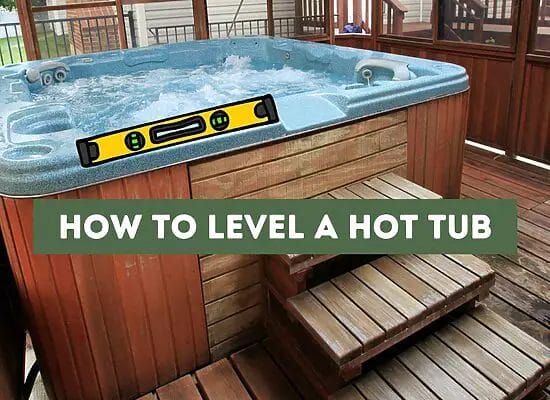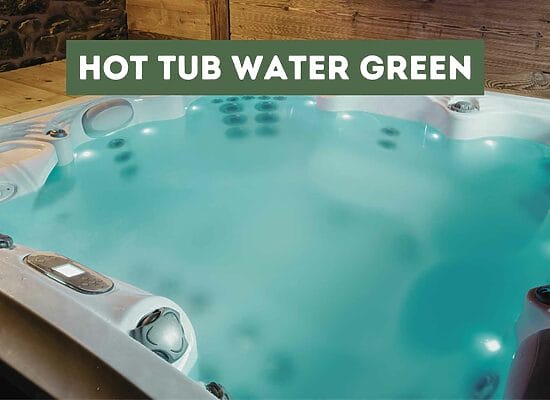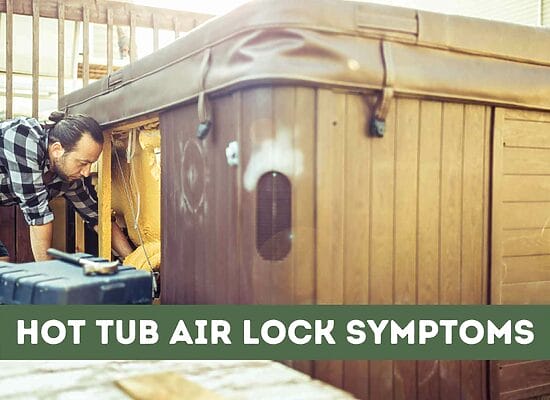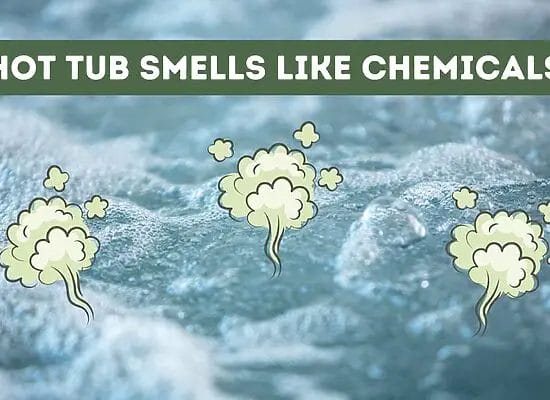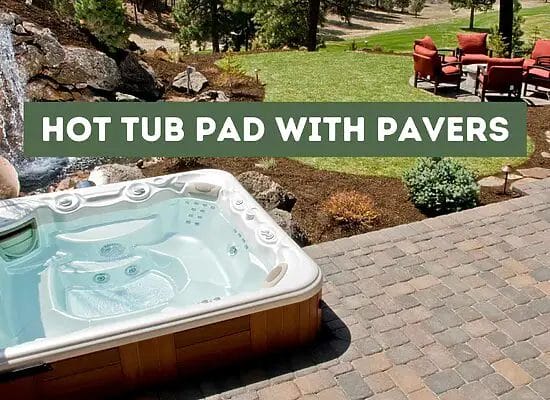
If you own a hot tub, you know how important it is to maintain the chemical balance of the water. One of the key factors to consider is the alkalinity level. If the alkalinity is too low, it can cause corrosion to the hot tub’s metal parts and lead to skin irritation. Adding baking soda is a common method to raise alkalinity, but how much do you need to add?
The amount of baking soda needed to raise alkalinity in your hot tub depends on the size of your hot tub and the current alkalinity level. As a general rule of thumb, you should add 1.5 pounds of baking soda for every 100 gallons of water to increase alkalinity by ten parts per million (ppm). However, it’s important to note that this is just a guideline, and you should always refer to the specific instructions on the product you are using.
To determine the exact amount of baking soda needed, you should first test the alkalinity level using a liquid test kit or test strips. Once you have the current alkalinity reading, you can calculate the dosage required based on the instructions on the bottle of baking soda or alkalinity increase.
By adding the correct amount of baking soda, you can ensure that your hot tub’s alkalinity level is within the recommended range of 80-120 ppm, providing a safe and enjoyable hot tub experience.
Key takeaways:
- Importance of Alkalinity in Hot Tubs: Maintaining proper alkalinity is crucial for balanced water chemistry and stability. Alkalinity resists pH level changes. Low alkalinity can lead to pH fluctuations, causing corrosion and discomfort, while high alkalinity can result in cloudy water and reduced sanitizer efficiency.
- Ideal Alkalinity Range: The recommended alkalinity range for hot tubs is between 80 and 120 parts per million (ppm). Alkalinity acts as a pH buffer, preventing drastic pH shifts. If it’s too low, baking soda can be added to raise it; if too high, muriatic acid can be used to lower it.
- Alkalinity-PH Relationship: Alkalinity and pH levels are interconnected. Low alkalinity leads to low pH (acidic water), while high alkalinity leads to high pH (basic water). Maintaining proper alkalinity helps keep pH within the ideal range of 7.2 to 7.8.
- Testing and Measuring Alkalinity: Regular testing of alkalinity is essential. Test strips or liquid test kits can be used. If alkalinity is below 80 ppm, adding baking soda is recommended. The formula is typically one tablespoon per 250 gallons of water.
- Using Baking Soda: Baking soda, sodium bicarbonate, is commonly used to raise alkalinity. Adding 1.5 pounds per 10,000 gallons of water increases alkalinity by 10 ppm. Adding slowly and monitoring levels prevents overcorrection.
- Steps to Raise Alkalinity: Calculate the required baking soda amount based on hot tub size. Turn on the pump for even distribution. Add baking soda slowly around the tub. Retest after 30 minutes and repeat if necessary.
- Safety Measures and Alternatives: When adjusting alkalinity, wear protective gear, follow product instructions, and avoid chemical mixing. Alternatives to baking soda include soda ash (raises pH too), dry acid (lowers pH and alkalinity), muriatic acid (lowers alkalinity), and pH decreaser (primarily for pH, but affects alkalinity). Consider water components and circulation for balanced water chemistry.
Understanding the Importance of Alkalinity in Hot Tubs
Maintaining the proper alkalinity level in your hot tub is essential to ensure the water’s chemical balance and stability. Alkalinity is a measure of the water’s ability to resist changes in pH levels. A low alkalinity level can cause the pH level to fluctuate, leading to corrosion and damage to the hot tub’s equipment. On the other hand, high alkalinity can cause the water to become cloudy and reduce the effectiveness of sanitizers.
Total alkalinity (TA) functions as a pH buffer for your hot tub, helping it counteract drastic changes in water chemistry. The ideal range for alkalinity in your hot tub is between 80 and 120 parts per million (ppm). If the alkalinity level is too low, you can add baking soda to raise it. If it’s too high, you can add muriatic acid to lower it.
It’s important to note that alkalinity and pH levels are interdependent. If the alkalinity level is too low, the pH level will also be low, making the water acidic. If the alkalinity level is too high, the pH level will also be high, making the water basic. Therefore, it’s crucial to maintain the proper alkalinity level to ensure the pH level remains within the ideal range of 7.2 to 7.8.
To determine the alkalinity level in your hot tub, you can use a test strip or a liquid test kit. If the alkalinity level is below 80 ppm, you can add baking soda to raise it. The recommended amount of baking soda to raise alkalinity in a hot tub is one tablespoon per every hundred gallons of water. For instance, if your hot tub holds 500 gallons of water, you’ll add five tablespoons of baking soda to raise the alkalinity level.
The Role of Baking Soda in Raising Alkalinity
If you own a hot tub, you know how important it is to maintain the right chemical balance in the water. One of the key factors to monitor is the alkalinity level. Alkalinity refers to the water’s ability to resist changes in pH, which can affect the comfort of your hot tub experience. One of the ways to raise alkalinity levels is by using baking soda.
Baking soda, also known as sodium bicarbonate, is a common household item that can be used to raise alkalinity levels in hot tubs. It is an alkaline substance that can neutralize acid in the water, making it less corrosive. Baking soda is also an effective alkalinity increaser, which means it can help stabilize the pH level of the water in your hot tub.
To use baking soda as an alkalinity increaser, you should first test the water’s alkalinity level using a test strip or kit. If the alkalinity level is below the recommended range (80-120 ppm), you can add baking soda to raise it. The amount of baking soda needed will depend on the size of your hot tub and the current alkalinity level.
As a general rule, you can add 1.5 pounds (680 grams) of baking soda per 10,000 gallons (37,854 liters) of water to raise the alkalinity level by 10 ppm. However, it’s important to add the baking soda slowly and in small amounts while monitoring the alkalinity level to avoid overcorrecting and causing other chemical imbalances.
It’s worth noting that some alkalinity increasers sold specifically for hot tubs contain sodium bicarbonate as their active ingredient. These products can be more convenient to use, but they may also be more expensive than baking soda.
How to Measure Alkalinity Levels
Measuring alkalinity levels in your hot tub is essential to maintaining a healthy and balanced environment. You can measure the alkalinity level using test strips or a testing kit.
Test strips are a quick and easy way to measure alkalinity levels. Simply dip the strip into the water and compare the color of the strip to the color chart provided. The color chart will indicate the current alkalinity level in parts per million (ppm).
If you want a more accurate measurement, you can use a testing kit. Testing kits come with a reagent that you add to a water sample from your hot tub. The reagent will change color based on the alkalinity level in the water. You then compare the color of the sample to the color chart provided with the testing kit to determine the alkalinity level in ppm.
It is recommended to test your hot tub’s alkalinity level at least once a week. The ideal range for hot tub alkalinity levels is between 80-120 ppm.
If your current alkalinity level is below the recommended range, you can raise it by adding baking soda. The amount of baking soda needed to raise the alkalinity level will depend on the size of your hot tub and the current alkalinity level.
Pro Tip: When measuring alkalinity levels, make sure to follow the instructions provided with the test strips or testing kit carefully. Improper use can lead to inaccurate readings and incorrect adjustments to your hot tub's chemistry.
Steps to Raise Alkalinity Using Baking Soda
If you have a hot tub, it is important to regularly test and balance the water chemistry to ensure a clean and safe soaking experience. One of the key factors to monitor is the alkalinity level, which helps to stabilize the pH balance. If your alkalinity is too low, you can raise it using baking soda. Here are the steps to follow:
- Calculate the amount of baking soda needed: The amount of baking soda required to raise the alkalinity level in your hot tub depends on the volume of water it holds. To calculate the correct dosage, refer to the instructions on the package or use an online calculator. As a general rule of thumb, you will need to add 1.5 pounds (0.68 kg) of baking soda per 500 gallons (1,893 liters) of water to raise the alkalinity by 10 parts per million (ppm).
- Turn on the pump: Before adding baking soda to your hot tub, turn on the pump to circulate the water. This will help distribute the baking soda evenly throughout the water.
- Add the baking soda: Slowly pour the baking soda into the hot tub, starting at the deep end and working your way around the perimeter. Use a clean plastic cup or scoop to avoid contaminating the water with other substances.
- Wait and retest: After adding the baking soda, wait at least 30 minutes before retesting the alkalinity level. If it is still too low, you can add more baking soda following the same dosage guidelines as before.
- Repeat as needed: Depending on the severity of the alkalinity imbalance, you may need to repeat this process several times over the course of a few days until the desired level is reached.
Potential Issues with Alkalinity Levels
Maintaining the right alkalinity levels in your hot tub is crucial for a comfortable and safe experience. However, if the alkalinity levels are not balanced, it can lead to several issues.
Irritation
Low alkalinity levels can lead to skin and eye irritation. The low alkalinity levels can cause the water to become acidic, which can lead to irritation and discomfort. High alkalinity levels, on the other hand, can cause the water to become too basic. This can also lead to skin irritation and dryness.
Cloudy Water
If the alkalinity levels in your hot tub are too low, it can cause the water to become cloudy. This is because low alkalinity levels can cause the pH levels to fluctuate, which can lead to the formation of cloudy water.
pH Levels
Alkalinity is closely linked to the pH levels in your hot tub. If the alkalinity levels are too low, it can cause the pH levels to drop. This can make the water acidic and lead to corrosion of the hot tub. High alkalinity levels can cause the pH levels to rise, making the water too basic. This can also lead to corrosion of the hot tub.
pH Bounce
If the alkalinity levels in your hot tub are not balanced, it can cause the pH levels to bounce. This means that the pH levels can fluctuate rapidly, leading to discomfort and irritation.
Corrosive Water
If the alkalinity levels in your hot tub are too low, it can cause the water to become corrosive. Corrosive water can cause damage to the hot tub and its components, leading to costly repairs.
To avoid these issues, it is essential to maintain the right alkalinity levels in your hot tub. Use baking soda to raise the alkalinity levels, and test the water regularly to ensure that the levels are balanced.
Maintenance of Alkalinity Levels in Hot Tubs
Maintaining the alkalinity levels in your hot tub is an essential part of hot tub maintenance. Alkalinity levels affect the pH levels, which in turn affects the effectiveness of sanitizers and the overall comfort of your hot tub experience.
To maintain alkalinity levels, it is recommended to test the water regularly using a test strip or a liquid test kit. Once you have determined the current alkalinity level, you can adjust it by adding baking soda. As a general guideline, adding 1.5 pounds of baking soda for every 100 gallons of water is recommended to increase alkalinity by ten parts per million (ppm).
It is important to note that adding too much baking soda can lead to high alkalinity levels, which can cause cloudy water and scaling. Additionally, high alkalinity levels can make it difficult to adjust the pH levels. Therefore, it is important to make small adjustments and retest the water after each adjustment.
In addition to adding baking soda, there are other steps you can take to maintain alkalinity levels. Proper use of the jets can help distribute chemicals and stabilize alkalinity levels. Regular cleaning and maintenance of the filter can also help maintain alkalinity levels by ensuring proper water circulation.
Safety Measures During Alkalinity Adjustment
When adjusting the alkalinity of your hot tub, it is important to take proper safety measures to protect yourself and those around you. Here are some tips to ensure a safe and successful alkalinity adjustment:
- Wear rubber gloves and goggles to protect your skin and eyes from harsh chemicals.
- Always read the label and follow the instructions on the alkalinity increaser product you are using.
- Never mix chemicals together, as this can cause dangerous reactions.
- Add the alkalinity increaser slowly and in small amounts, testing the water frequently to ensure you do not overshoot your target alkalinity level.
- If you accidentally spill any chemicals, clean it up immediately and dispose of it properly according to local regulations.
- Keep all chemicals out of reach of children and pets.
Pro Tip: When adding baking soda to raise the alkalinity of your hot tub, it is best to dissolve it in a bucket of water first before adding it to the hot tub. This ensures that the baking soda is evenly distributed throughout the water and reduces the risk of clumping or settling at the bottom of the tub.
Alternatives to Baking Soda for Alkalinity Adjustment
While baking soda is a common household product that can be used to raise alkalinity levels in your hot tub, there are other alternatives that you can use as well. These alternatives may be more effective, easier to use, or more readily available, depending on your situation.
Soda Ash
Soda ash, also known as sodium carbonate, is another product that can be used to raise alkalinity levels in your hot tub. Unlike baking soda, soda ash will also raise the pH levels in your hot tub. This means that you should only use soda ash if both your alkalinity and pH levels are low.
To use soda ash, you should first test the alkalinity and pH levels in your hot tub. Then, add the appropriate amount of soda ash to your hot tub according to the manufacturer’s instructions. Be sure to mix the soda ash thoroughly into the water before testing the levels again.
Dry Acid
Dry acid, also known as sodium bisulfate, is a product that can be used to lower the pH levels in your hot tub. However, it can also be used to lower the alkalinity levels as well.
To use dry acid, you should first test the alkalinity and pH levels in your hot tub. Then, add the appropriate amount of dry acid to your hot tub according to the manufacturer’s instructions. Be sure to mix the dry acid thoroughly into the water before testing the levels again.
Muriatic Acid
Muriatic acid, also known as hydrochloric acid, is a strong acid that can be used to lower the alkalinity levels in your hot tub. However, it should be used with caution as it can be dangerous if not handled properly.
To use muriatic acid, you should first test the alkalinity levels in your hot tub. Then, add a small amount of muriatic acid to your hot tub and test the levels again. Repeat this process until the desired alkalinity level is reached. Be sure to follow the manufacturer’s instructions carefully and wear protective gear when handling muriatic acid.
pH Decreaser
While pH decreaser is primarily used to lower the pH levels in your hot tub, it can also be used to lower the alkalinity levels as well. This product is typically made from sodium bisulfate.
To use pH decreaser, you should first test the alkalinity and pH levels in your hot tub. Then, add the appropriate amount of pH decreaser to your hot tub according to the manufacturer’s instructions. Be sure to mix the pH decreaser thoroughly into the water before testing the levels again.
Impact of Other Chemicals on Alkalinity
When it comes to maintaining the alkalinity level in your hot tub, it’s important to consider the impact of other chemicals. Chlorine and bromine, for example, can have an effect on the alkalinity level.
Chlorine is a common sanitizer used in hot tubs, but it can also decrease the alkalinity level. When chlorine is added to the water, it reacts with organic matter and forms chloramines. This reaction can cause the pH level to decrease, which in turn can lower the alkalinity level. To maintain the alkalinity level, it’s important to monitor the pH level and add baking soda as needed.
Bromine is another sanitizer that can affect the alkalinity level. Like chlorine, bromine can react with organic matter and cause the pH level to decrease. However, bromine is less likely to affect the alkalinity level than chlorine. Still, it’s important to monitor the pH level and alkalinity level when using bromine as a sanitizer.
In addition to sanitizers, other chemicals can also affect the alkalinity level. Sodium bisulfate, for example, is often used to lower the pH level in hot tubs. While it doesn’t directly affect the alkalinity level, lowering the pH level can cause the alkalinity level to decrease as well. To maintain the alkalinity level, it’s important to add baking soda as needed after using sodium bisulfate.
Understanding the Impact of Water Components on Alkalinity
Maintaining the alkalinity of your hot tub water is crucial to ensure a comfortable and safe soaking experience. Alkalinity refers to the water’s ability to resist changes in pH levels. If the alkalinity is too low, the pH levels can fluctuate wildly, leading to skin irritation and corrosion of the hot tub’s metal components. On the other hand, if the alkalinity is too high, the water can become cloudy, and the chemicals you add to the water may not be as effective.
Several factors can impact the alkalinity of your hot tub water. One of the most significant factors is the presence of calcium in the water. Calcium hardness refers to the amount of dissolved calcium in the water. If the calcium hardness is too high, it can lead to scaling, which is the buildup of calcium deposits on the hot tub’s walls and components. Insufficient calcium hardness can lead to the erosion of metal components in the hot tub.
Another factor that can impact alkalinity is total dissolved solids (TDS). TDS refers to the total amount of dissolved particles in the water, including minerals, salts, and metals. If the TDS level is too high, it can lead to scaling and cloudy water. On the other hand, if the TDS level is too low, it can cause corrosion of the hot tub’s metal parts.
Water temperature can also impact alkalinity. Higher temperatures can cause the pH levels to rise, leading to lower alkalinity levels. Therefore, it is essential to monitor the water temperature and adjust the chemicals accordingly.
Maintaining proper water balance is crucial for maintaining alkalinity levels. Water balance refers to the relationship between pH, alkalinity, and calcium hardness. If the water is not balanced, it can lead to fluctuations in pH levels and alkalinity.
Water circulation is also crucial for maintaining proper alkalinity levels. Proper circulation ensures that the chemicals are distributed evenly throughout the water, preventing hot spots and cold spots.
To raise alkalinity levels, you can use baking soda, which is sodium bicarbonate. One tablespoon of baking soda per 250 gallons of water (15 grams per 1000 liters) will raise alkalinity by about 10 ppm. However, it is essential to test the water frequently and adjust the chemicals as necessary to maintain proper alkalinity levels.
FAQ: How Much Baking Soda to Raise Alkalinity in Hot Tub?
How much baking soda should I use to increase alkalinity in my hot tub?
To increase the alkalinity in your hot tub, you should add 1.5 pounds of baking soda for every 100 gallons of water. This will raise the alkalinity by ten parts per million (ppm). It is important not to add too much baking soda, as this can cause the pH level to increase too quickly.
What is the recommended amount of baking soda to add to a hot tub to raise alkalinity?
The recommended amount of baking soda to add to a hot tub to raise alkalinity is 1.5 pounds for every 100 gallons of water. This will increase the alkalinity by ten parts per million (ppm). However, it is important to test the water regularly and adjust the amount of baking soda as needed.
How do I calculate the amount of baking soda needed to raise alkalinity in my hot tub?
To calculate the amount of baking soda needed to raise alkalinity in your hot tub, you will need to know the current alkalinity level and the volume of water in your hot tub. Use a liquid test kit or test strips to take a reading of the current alkalinity level. Then, use the following formula to calculate the amount of baking soda needed: (desired alkalinity – current alkalinity) x volume of water (in gallons) / 10 = pounds of baking soda needed.
Can I use baking soda as an alkalinity increaser in my hot tub?
Yes, baking soda can be used as an alkalinity increaser in your hot tub. It is a safe and effective way to raise the alkalinity level and help maintain the proper chemical balance in your hot tub.
How long does it take for baking soda to raise alkalinity in a hot tub?
It can take several hours for baking soda to raise the alkalinity in your hot tub. It is recommended to wait at least four hours before retesting the water after adding baking soda. It is also important to note that the rate at which the alkalinity increases will depend on the size of your hot tub and the amount of baking soda added.
Is baking soda a better option than alkalinity increaser to raise alkalinity in a hot tub?
Baking soda is a safe and effective option to raise alkalinity in your hot tub. However, there are other alkalinity increasers available on the market that may work better for your specific hot tub. It is important to follow the manufacturer’s instructions and test the water regularly to maintain the proper chemical balance in your hot tub.

